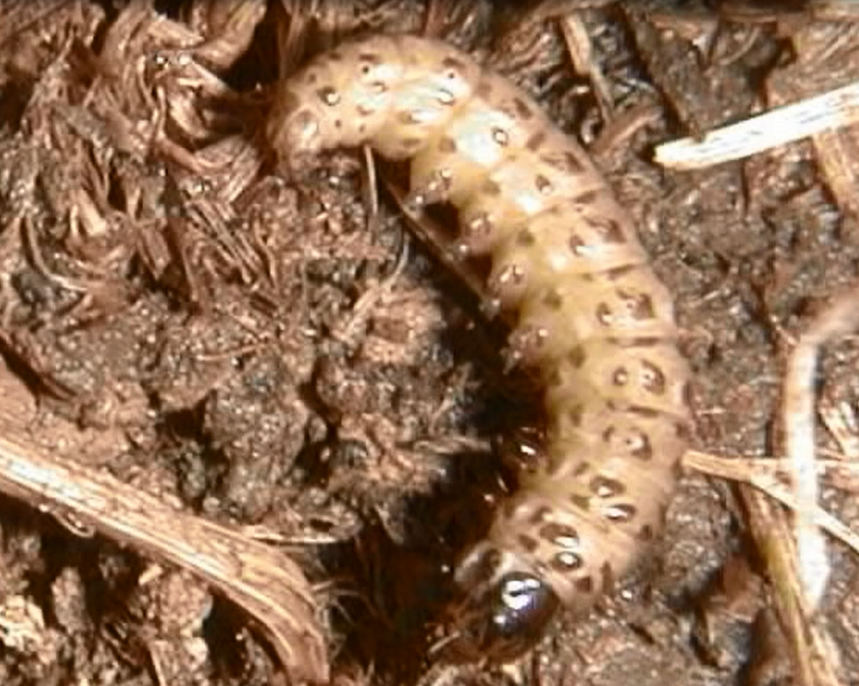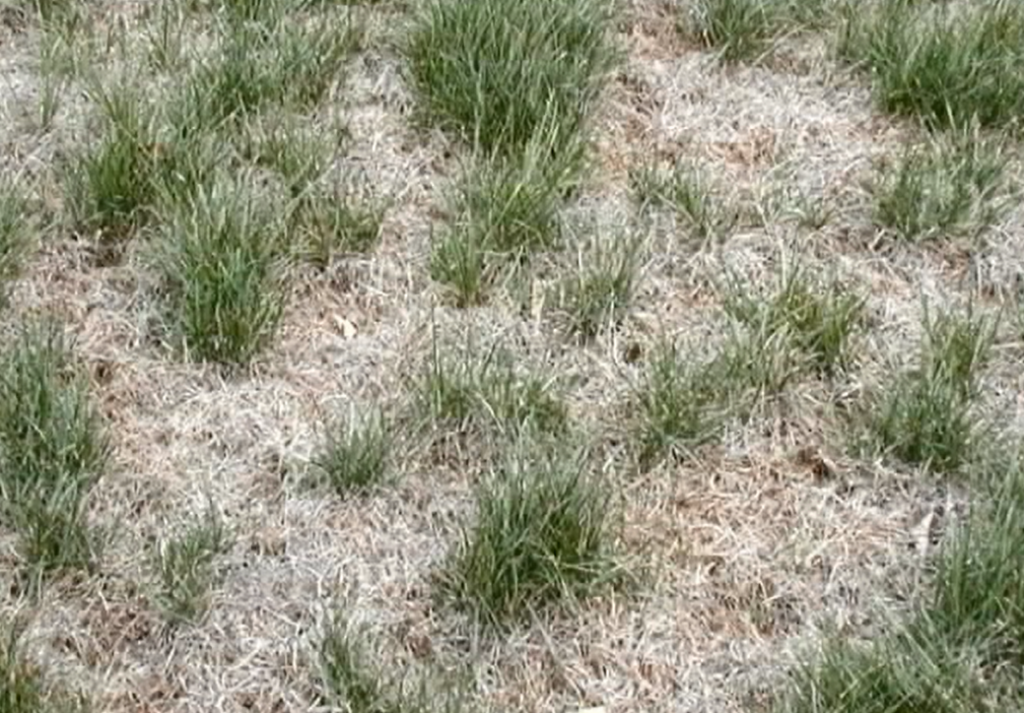Sod Webworm Damage Pictures: A Comprehensive Guide For Lawn Care Enthusiasts
Sod webworm damage pictures are essential tools for lawn care professionals and homeowners alike. Understanding the signs of sod webworm infestations is critical to protecting your lawn's health and appearance. In this article, we will delve into the details of identifying sod webworm damage, its impact on lawns, and effective treatment methods.
Lawns are often seen as a reflection of a homeowner's dedication to maintaining a beautiful outdoor space. However, one of the most common threats to lawn health is the presence of sod webworms. These small pests can wreak havoc on grass, leaving unsightly patches of dead or damaged turf. Recognizing the early signs of sod webworm damage is key to preventing widespread destruction.
Through the use of sod webworm damage pictures, we aim to equip you with the knowledge necessary to identify and address this issue promptly. In the following sections, we will explore the lifecycle of sod webworms, the impact of their feeding habits on lawns, and how to combat infestations effectively. Let's dive in!
- Buffalo Chicken Grilled Cheese Disney
- What Sign Is The Grinch
- Madonna Halloween Costume
- Tim And Mark Supermarket Sweep
- Silvion Ramsundar
Table of Contents:
- Introduction to Sod Webworms
- Identifying Sod Webworm Damage
- Lifecycle of Sod Webworms
- Impact on Lawns
- Sod Webworm Damage Pictures
- Prevention and Control Methods
- Natural Remedies for Sod Webworms
- Chemical Treatments
- Diagnosing an Infestation
- Tips for Healthy Lawn Maintenance
Introduction to Sod Webworms
Sod webworms are the larvae of various species of moths belonging to the family Crambidae. These pests are notorious for their ability to damage lawns, particularly during the summer months. Adult moths lay their eggs on grass blades, and the resulting larvae feed voraciously on the grass, causing significant destruction.
- Sheila Bellush Children Now
- Sheryl Lee Ralph Weight Loss
- Heather And Chris Dempsey 2024
- Royal Family Christmas Walk 2024
- Nessa Diab Baby Name
Common Species of Sod Webworms
There are several species of sod webworms, with the most common being the bluegrass sod webworm and the large patch sod webworm. Each species has its own unique characteristics, but they all share a similar lifecycle and feeding behavior. Understanding these differences can help in identifying the specific pest affecting your lawn.
Identifying Sod Webworm Damage
Recognizing sod webworm damage is crucial for effective treatment. The most common signs include irregular patches of brown or dead grass, silk webs on the grass surface, and the presence of small, greenish-brown larvae. Inspecting your lawn regularly can help in catching infestations early.
Key Indicators of Infestation
- Irregular patches of dead grass
- Silk webs visible on grass blades
- Presence of small larvae
- Birds feeding on the lawn
Lifecycle of Sod Webworms
The lifecycle of sod webworms consists of four stages: egg, larva, pupa, and adult. The larvae are the most destructive stage, as they feed on grass blades and cause visible damage. Understanding this lifecycle can help in timing treatments effectively.
Egg Stage
Adult moths lay their eggs on grass blades, often in the early summer. The eggs hatch within a few days, releasing the larvae that will begin feeding on the grass.
Larval Stage
This is the most damaging stage, where larvae feed on grass blades, causing visible damage. The larvae grow through several instars before entering the pupal stage.
Impact on Lawns
Sod webworm damage can have a significant impact on the health and appearance of lawns. The feeding activity of the larvae results in irregular patches of dead grass, which can spread rapidly if left untreated. Additionally, the damage can make lawns more susceptible to other pests and diseases.
Long-Term Effects
Prolonged infestations can lead to the deterioration of the lawn's root system, making recovery more challenging. It is essential to address infestations promptly to prevent long-term damage.
Sod Webworm Damage Pictures
Visual aids such as sod webworm damage pictures can be invaluable in identifying and diagnosing infestations. These images showcase the various stages of damage, from early signs to advanced stages. Below are some key features to look for:
- Brown patches of grass
- Silk webs on the grass surface
- Visible larvae feeding on grass blades
Prevention and Control Methods
Preventing sod webworm infestations involves a combination of cultural practices and targeted treatments. Regular lawn maintenance, such as proper mowing and watering, can help in reducing the risk of infestations.
Cultural Practices
Maintaining a healthy lawn through proper irrigation, fertilization, and aeration can help in reducing the likelihood of sod webworm infestations. Removing thatch buildup is also important, as it provides a habitat for the larvae.
Natural Remedies for Sod Webworms
For those seeking eco-friendly solutions, natural remedies can be effective in controlling sod webworm populations. Beneficial nematodes and microbial insecticides are two popular options that target the larvae without harming beneficial insects.
Beneficial Nematodes
These microscopic organisms infect and kill sod webworm larvae, providing an effective biological control method. They are safe to use around pets and humans and can be applied easily to lawns.
Chemical Treatments
In cases of severe infestations, chemical treatments may be necessary. Insecticides containing active ingredients such as bifenthrin or carbaryl can be effective in controlling sod webworm populations. However, it is essential to follow label instructions carefully to avoid harming beneficial insects and the environment.
Diagnosing an Infestation
Proper diagnosis of sod webworm infestations involves a combination of visual inspection and testing methods. A soapy water flush is a common technique used to bring larvae to the surface for easy identification.
Soapy Water Flush
Mixing a few tablespoons of liquid dish soap with water and applying it to a suspected area can force the larvae to the surface. This method is an effective way to confirm the presence of sod webworms.
Tips for Healthy Lawn Maintenance
Maintaining a healthy lawn involves a combination of proper care practices and vigilance in monitoring for pests. Below are some tips to help keep your lawn thriving:
- Mow grass at the appropriate height
- Water deeply and infrequently
- Fertilize according to soil test recommendations
- Inspect your lawn regularly for signs of pests
Kesimpulan
Sod webworm damage pictures are valuable tools in identifying and addressing infestations in lawns. By understanding the lifecycle of these pests and implementing effective prevention and control methods, homeowners can protect their lawns from damage. Regular maintenance and vigilance are key to maintaining a healthy, vibrant lawn.
We encourage you to share your experiences and tips in the comments below. Additionally, feel free to explore other articles on our site for more information on lawn care and pest management. Together, we can create beautiful, thriving outdoor spaces!
Data sources:
- Michelle Buteau Net Worth
- How Did Megan Thee Stallion Father Passed Away
- Villain Of Moana 2
- Stacey From 90 Day Fiance
- Will And Zach Zulock

Sod Webworm Activity Insect Control Lehigh Valley Turfpro

Sod Webworms ServiceMaster Lawncare Fredericton Saint John

Sod Webworms ServiceMaster Lawncare Fredericton Saint John